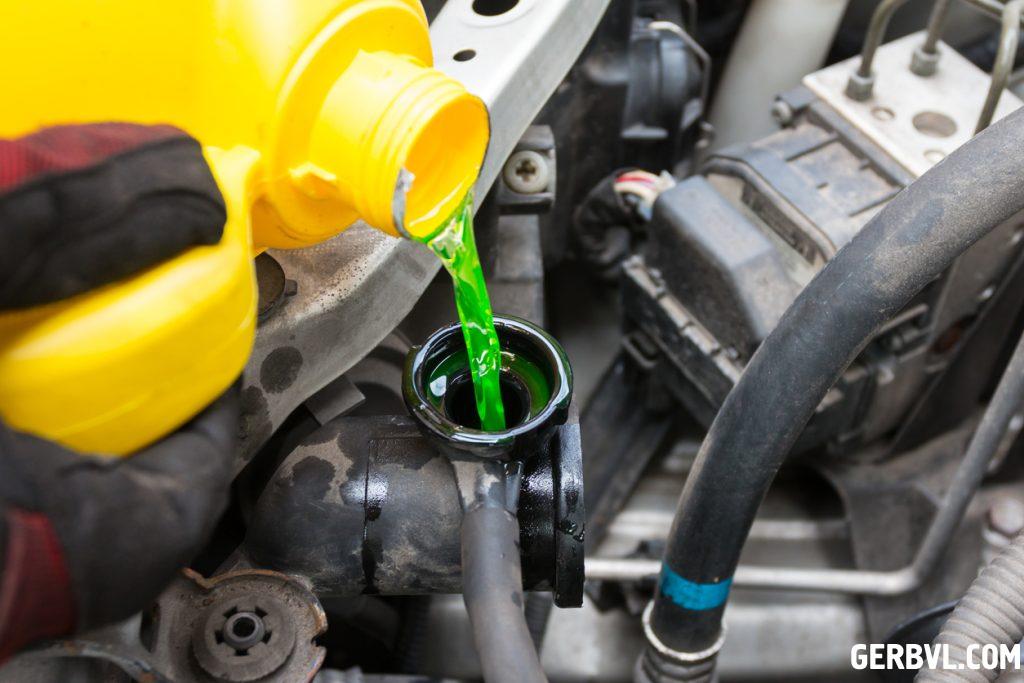The cooling system employs a heat exchanger that uses fluid—the cooling system—to remove heat from the engine and distribute it into the atmosphere. Both antifreeze and coolant are phrases that are frequently used interchangeably when referring to your car’s cooling system. Despite their near resemblance, the two are very different from one another.

This post will discuss the numerous types that are available, how they protect your engine, how to maintain your cooling system with them, and their differences.
WHAT IS THE DIFFERENCE BETWEEN COOLANT AND ANTIFREEZE?
Because coolant and antifreeze serve the same function in the cooling system of your car, there might be confusion between the two. Either propylene or ethylene glycol are the main ingredients of antifreeze, which is a concentrated solution made with water. For the majority of cars and areas, it’s a 50/50 blend. It acts as the foundation fluid that controls the temperature of your engine.
Conversely, coolant is a pre-mixed solution of water and antifreeze that may be added straight to your car’s cooling system. Coolant is essentially antifreeze that has had water added to it to make it a ready-to-use mixture. In order to address a frequently asked topic, are coolant and antifreeze the same thing? Though not exactly, they have a lot in common.
Antifreeze gets its name from its capacity to keep things from freezing in extremely cold weather. It ensures that the fluid in your engine’s cooling system stays fluid even in extremely cold weather by lowering the freezing point of water. This stops the expansion of frozen water from damaging your radiator and engine block.
Conversely, coolant fulfills two functions. It not only keeps your cooling system’s liquid from freezing, but it also boosts its boiling point. This is essential to avoid overheating while using a large engine in hot weather. Effective heat transmission from the engine to the radiator, where it may disperse, is how it functions.
ANTIFREEZE/COOLANT IMPORTANCE: GUARDING YOUR ENGINE
Controlling the engine’s temperature is one of the main jobs of the cooling system in your car. Excessive engine heat can cause serious damage, such as burst head gaskets, bent cylinder heads, and other issues. By keeping the engine within the ideal operating temperature range, coolant and antifreeze are essential in preventing this kind of overheating.
However, it goes beyond that. The prevention of rust and corrosion in your cooling system is another essential function of coolant and antifreeze. Metal parts are susceptible to deterioration from air and moisture over time. By shielding these parts, the chemicals in coolant and antifreeze help your engine run longer.
Various Coolant/Antifreeze Types: Which Is Best for Your Car?
Ethylene and propylene glycol are the two main kinds of antifreeze. The most popular kind, ethylene glycol, offers superior freeze and boil protection. But handling it should be done carefully because it is harmful.
Conversely, propylene glycol is thought to be less hazardous to the environment and less poisonous. It offers comparable protection against freeze and boil, although it might need to be changed more frequently.
Compatibility is an important factor to take into account when selecting coolant or antifreeze for your car. Combining several kinds might cause chemical reactions that could damage your engine.
Additionally, be sure the coolant and antifreeze you use are suitable with your car. There are several chemistries available, such as:
-Additive Technology in Inorganic Matter (IAT)
-Technology of Organic Acids (OAT)
-Technology for Hybrid Organic Acids (HOAT)
-Technology for Phosphated Hybrid Organic Acid (P-HOAT)
-Organic Acid Technology with Silicated Hybridization (Si-OAT)
Examining the hue is one of the finest methods to be sure you’re getting the correct kind. Make sure the product is meant for the make and model of your car by reading the label as well.
How to monitor and maintain the levels of your coolant and antifreeze
Maintaining the right levels of coolant and antifreeze is essential for the longevity and overall health of your car. Check the level in your radiator reservoir or overflow often. Make sure the marker is between the MIN and MAX. Examine the color as well; it ought to match the coolant you’re using. It has to be changed if it is cloudy or discolored.
IMPLEMENTING OR REPLACING COOLANT OR ANTIFREEZE
It’s time to add additional coolant if you notice problems like overheating or if your coolant level is low. Make sure your engine is cold before carefully adding the right amount of coolant mix to the radiator or reservoir. If a total replacement is required, make sure all of the old fluid is gone by flushing the coolant before adding the new combination.
